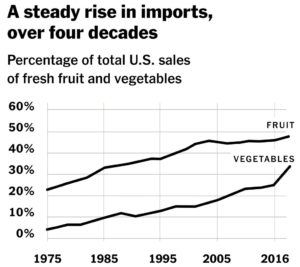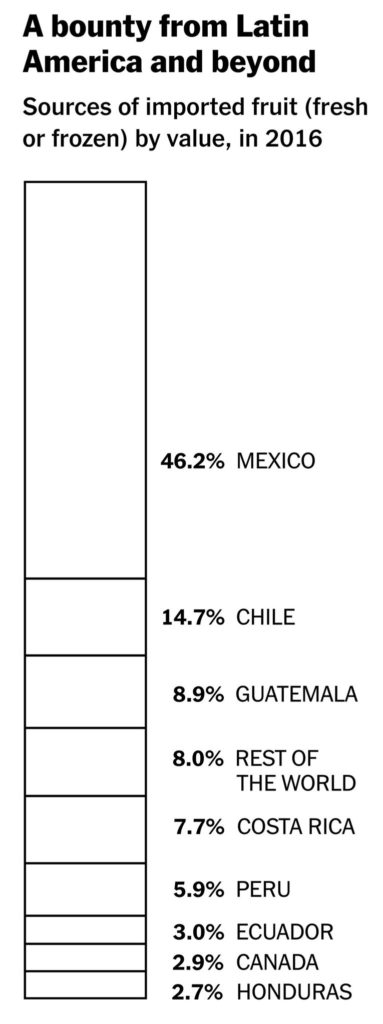 Cooking healthy meals was once focused on shopping seasonally, peeling foods with lots of pesticides (apples, potatoes), avoiding too many processed foods, and eating from each category on the USDA food pyramid. Now, I have to think about the carbon footprint of each food if I want to do my part to stop global warming. I also want to support economic justice for global family farmers. Shopping, cooking, and eating is more complex than ever.
Cooking healthy meals was once focused on shopping seasonally, peeling foods with lots of pesticides (apples, potatoes), avoiding too many processed foods, and eating from each category on the USDA food pyramid. Now, I have to think about the carbon footprint of each food if I want to do my part to stop global warming. I also want to support economic justice for global family farmers. Shopping, cooking, and eating is more complex than ever.
Example: I assumed that imported foods would have the worst carbon footprint due to its ride across the hemisphere or even the planet on the global transportation machine. Therefore, I could simply chose local foods. The problem is, that half of our fruits and vegetables -overall- are now imported. From the NYT:
However, as much as 99% of some are imported. Consider this graphic, also from the NYT:
Cauliflower is not on the above list, but I read elsewhere that over 90% of it is imported. That’s right, just about everything in the produce section this winter is imported. Even the organics, which are also mostly imports. In less developed countries, growing fresh produce for the US market is a booming industry. That means the choices I make now need to balance my desire for a healthy, plant-based diet, the product’s carbon footprint, and the economic impact on a poorer farmer in a less developed nation. I should care about them too, right? But what about the farmer who destroys forests to plant soybeans or blueberries that have been bred to grow in warmer climates? Another issue: should I buy from farmers closest to me, like Mexico but not Chile? What a friggen mess.
Clearly, I will have to buy imports unless I grow everything myself. Breathe. Breathe. Breathe. Sort it out. You can do this.
I made a plan:
- First, I am going to eliminate from my diet imported exotic foods that I simply don’t need. Pomegranates, kiwis, eggplants, mangos. Maybe pineapples, too. I don’t care much for pomegranate seeds, so no problem there. I adore mangos though, and they are cheap. I dice them up and put them in my infusion water bottle. Okay, I can do without, because I also love to do that with cucumbers. I love eggplant but a few in the summer, when they are local, keeps me happy.
- I will buy healthy imports when local is not available, including cucumbers, grapes, blueberries, tomatoes, squash, garlic, avocados, citrus, winter squashes, kale, etc. However, I will purchase smaller amounts and be careful not to waste or overeat. Produce is the most wasted food in the U.S.
- I will remember that imported fresh produce has a much lower footprint than animal agriculture. In other words, if I allow myself X amount of carbon emissions for my food needs, it will go a great deal farther if I eat imported plant products instead of U.S. raised red meat. And, the “developing countries” produce farmers get to earn a living too
- I will use more efficient means of cooking.
- When I settle down a bit more, I will try to get a community garden spot and grow as much as I can. I still have my dehydrator and Kitchenaide from when I was a serious gardener and can put up some things.
After a great deal of reading and research, after hair pulling and confusion, I have a plan to eat healthy foods but to also take into account the carbon footprint of agricultural products as well and promote better economic conditions for farmers outside the U.S, while reducing my demand for products that motivate them to destroy the worlds forests. Whew! Although it is all summarized in a few paragraphs here, that was a lot of work.
Could anything be worse? Yes: Coffee! Fish! Even bigger messes. But, for today I am exhausted. I would really like to do some emotional eating to calm myself down, but then I would be contributing even more to global warming, maybe even denying my grandson his future. Friggen mess, as I said before.





